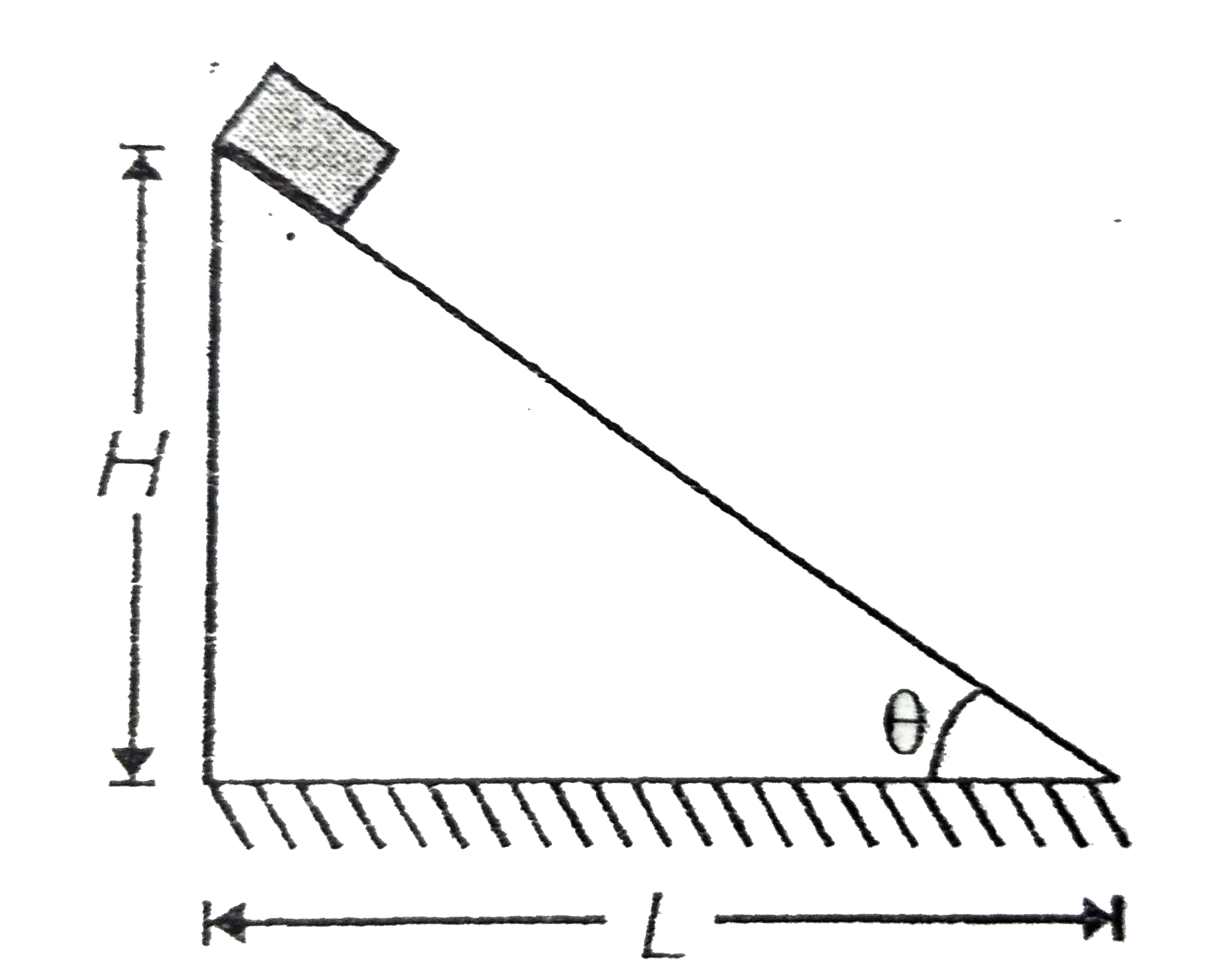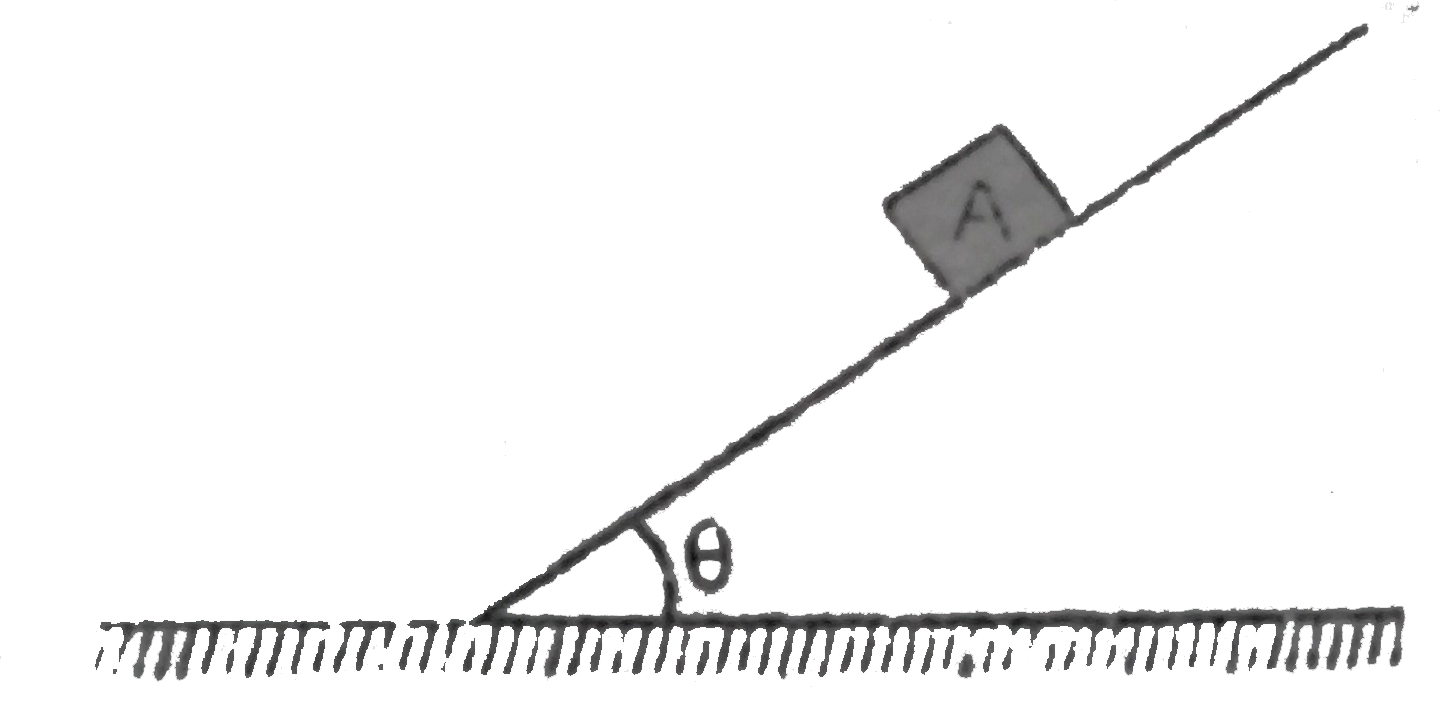A uniform disc is released from the top of a rough inclined plane of angle and height h. The coefficient of friction between the disc and the plane is . The speed of centre of mass of disc on reaching the bottom of the plane is
To solve the problem step by step, we will analyze the motion of a uniform disc rolling down a rough inclined plane.
Step 1: Identify the Forces Acting on the Disc
When the disc is released from the top of the inclined plane, the forces acting on it are:
- The gravitational force mg acting downwards.
- The normal force N acting perpendicular to the surface of the incline.
- The frictional force f acting up the incline.
Step 2: Determine the Components of Forces
The gravitational force can be resolved into two components:
- Parallel to the incline: mgsinθ
- Perpendicular to the incline: mgcosθ
The normal force N balances the perpendicular component of the gravitational force:
N=mgcosθ
Step 3: Calculate the Frictional Force
The frictional force f can be expressed in terms of the coefficient of friction μ:
f=μN=μmgcosθ
Given that μ=tanθ4, we can substitute:
f=tanθ4mgcosθ
Step 4: Determine the Acceleration of the Disc
Using Newton's second law along the incline, we can write:
mgsinθ−f=ma
Substituting for f:
mgsinθ−tanθ4mgcosθ=ma
Dividing through by m:
gsinθ−tanθ4gcosθ=a
Now, substituting tanθ=sinθcosθ:
gsinθ−sinθ4g=a
gsinθ(1−14)=a
gsinθ⋅34=a
Thus, the acceleration a of the disc is:
a=3gsinθ4
Step 5: Calculate the Distance Travelled Along the Incline
The height of the incline is h, and the length of the incline s can be found using:
s=hsinθ
Step 6: Use Kinematic Equation to Find Final Velocity
Using the kinematic equation:
v2=u2+2as
Since the initial velocity u=0:
v2=2as
Substituting for a:
v2=2(3gsinθ4)s
Now substituting s=hsinθ:
v2=2(3gsinθ4)(hsinθ)
v2=3gh2
Thus, the final velocity v is:
v=√3gh2
Conclusion
The speed of the center of mass of the disc on reaching the bottom of the plane is:
v=√3gh2
When the disc is released from the top of the inclined plane, the forces acting on it are:
- The gravitational force mg acting downwards.
- The normal force N acting perpendicular to the surface of the incline.
- The frictional force f acting up the incline.
The gravitational force can be resolved into two components:
- Parallel to the incline: mgsinθ
- Perpendicular to the incline: mgcosθ
N=mgcosθ
The frictional force f can be expressed in terms of the coefficient of friction μ:
f=μN=μmgcosθ
Given that μ=tanθ4, we can substitute:
f=tanθ4mgcosθ
Using Newton's second law along the incline, we can write:
mgsinθ−f=ma
Substituting for f:
mgsinθ−tanθ4mgcosθ=ma
gsinθ−tanθ4gcosθ=a
gsinθ−sinθ4g=a
gsinθ(1−14)=a
gsinθ⋅34=a
Thus, the acceleration a of the disc is:
a=3gsinθ4
The height of the incline is h, and the length of the incline s can be found using:
s=hsinθ
Using the kinematic equation:
v2=u2+2as
Since the initial velocity u=0:
v2=2as
Substituting for a:
v2=2(3gsinθ4)s
Now substituting s=hsinθ:
v2=2(3gsinθ4)(hsinθ)
v2=3gh2
Thus, the final velocity v is:
v=√3gh2
The speed of the center of mass of the disc on reaching the bottom of the plane is:
v=√3gh2
Similar Questions
A block of mass m is at rest on a rough inclined plane of angle of inclination θ. If coefficient of friction between the block and the inclined plane is μ, then the minimum value of force along the plane required to move the block on the plane is
View SolutionA block of mass m slides from the top of an inclined plane of angle of inclination θ & length l. The coefficient of friction between the plane and the block is μ. Then it is observed over a distance d along the horizontal surface having the same coefficient of friction μ, before it comes to a stop. Find the value of d.
View SolutionA block of mass m slides down an inclined plane of inclination θ with uniform speed. The coefficient of friction between the block and the plane is μ. The contact force between the block and the plane is
View SolutionA block of mass m slides down an inclined plane which makes an angle θ with the horizontal. The coefficient of friction between the block and the plane is μ. The force exerted by the block on the plane is
View SolutionA block is placed at the top of an inclined plane 5 m long. The plane makes an angle of 60∘ with the horizontal. If the coefficient of friction between the wood and the plane is 0.3, find the time taken by the block of slide down the bottom of the plane.
View SolutionA small blockofmass 'm' is released from rest at the top of a rough inclined plane as shown The coefficient of friction between the block and inclined plane is 'μ' Using work-energy theorem, find the speed of block as it passes the lowest point.

View SolutionA ball of mass M and radius R is released on a rough inclined plane of inclination θ. Friction is not sufficient to prevent slipping. The coefficient friction between the ball and the plane is μ. Find
(a). The linear acceleration of the ball down the plane.
(b). the angular acceleration of the ball about its centre of mass.
View SolutionA block of mass m is placed at rest on an inclination θ to the horizontal. If the coefficient of friction between the block and the plane is μ, then the total force the inclined plane exerts on the block is
View SolutionA block A is kept on a rough inclined plane. Initially θ=0. The co-efficient of kinetic friction between A and the inclined plane is √3 The angle θ is increased slowly. When θ becomes 60∘, then :

View SolutionA block of mass m is placed on a rough plane inclined at an angle θ with the horizontal. The coefficient of friction between the block and inclined plane is μ . Ifθ<tan−1(μ) , then net contact force exerted by the plane on the block is :
View Solution
